Do we need to know about HVAC system components? Well, HVAC systems are intended not only to adjust the thermal conditions of an area (mostly indoor), but they also bear the responsibility of delivering clean air to provide comfort in the environment when needed. Therefore, it would be quite beneficial actually to know some basics about their components, not only to appreciate the engineering art put into them, but also to be able to identify easier what might your system need to work as you wish.
The system that heats and cools your house is referred to as HVAC. You can rely on the HVAC system’s furnace component to keep you warm in the winter and cool and pleasant in the summer. Let’s look at the eight fundamental components of a house HVAC system that includes the conventional furnace and split-system air conditioner combo, even if some homes are heated and cooled using boilers, radiant floor heating, heat pumps, ductless mini splits, or window air conditioners. Several Suppliers and Companies, as well as other manufacturers and distributors, supply HVAC system components, and there are many HVAC System Components for Sale on Linquip.
Linquip can help you easily find the solution to meet your HVAC requirements. We invite you to read along to learn with us some information about HVAC system components.
What Are the Main Parts of an HVAC System?
Following is a list of HVAC components we will discuss in this post:
- Thermostat
- Heat generator
- Heat exchanger
- Blower
- Condenser Coil or Compressor
- Evaporator coil
- Air Ducts and Vents
HVAC System Components Diagram
In the following diagram, you can find some major components that concern pretty much all HVAC systems. There are, of course, differences between different HVAC system configurations, but the core concept and HVAC components are basically common among all of them. The following diagram shows a working cycle in an HVAC system, that could be intended for both heating and cooling applications by changing where the heat is absorbed from and where it is rejected to.
HVAC stands for Heating, Ventilation, and Air Conditioning; therefore, the design of such systems is mostly accompanied by some air ventilating and cleaning processes that are integrated with these systems.
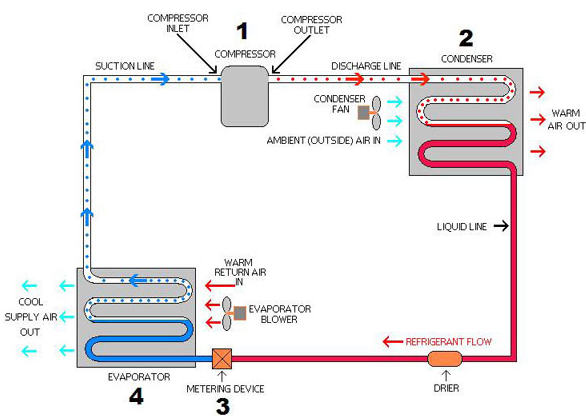
Parts of HVAC System
In the following sections, we will take a closer look at the major components of HVAC systems.
Thermostat
The temperature sensor on a thermostat indicates when the heater or air conditioner should be running or turned off. There could be various thermally controlled zones, each of which requires its own thermostat. The thermostat must be located somewhere as far as possible from areas of concentrated temperature difference with the mean temperature of the intended space.

Heat Generator
The heat generator is a key member of HVAC system components when it comes to heating. What happens in these devices is the generation of heat, for instance, through the extraction of fuel energy inside a furnace, aka combustion chamber. Hot flue gases will then provide heating for the air or another fluid such as water that will later heat the air entering the conditioned environment. Electric heat generation could also be used to heat the conditioning air.
Although there might be a variety of choices for heat generators, the most common forms are the furnaces, and therefore, it is important to consider combustion efficiency for resource control and pollutant emission for environmental concerns regarding these HVAC system components.
Combustion efficiency is the proper and complete reaction of fuel with oxygen inside the furnace so that no fuel is wasted. The efficiency of the furnace could also be extended to optimal transfer (minimal loss) of the generated heat to the next intended medium, be it the conditioning air or another fluid such as water. The general considerations regarding this would be proper mixing of fuel and air inside the furnace, well-shaped glow sticks or igniters, optimal heat transfer, and also operation safety.
Heat Exchanger
Heat exchangers are one of the HVAC system components that receive the heat generated in the heat generation unit and transfer it to another fluid. Some control units will activate the furnace or electric heating elements when needed to regulate the air temperature passing through the heat exchanger.
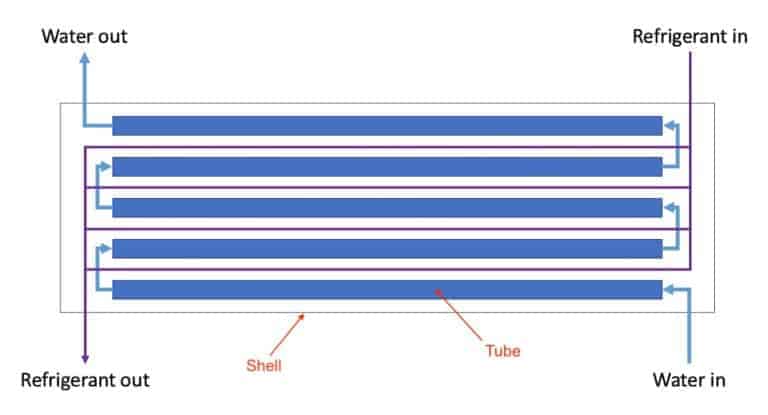
In many applications, the heat is transferred directly to the cool air in order to provide heating for the intended space. In this case, some device blows the air through hot flue gas tubes or electric heating elements, transferring the energy to the air via heat absorption.
Since most heat generators burn fuel as the energy source, some safety considerations shall be in order. It is because combustion systems mostly operate with excess air to lower combustion temperature and hence produce lower NOx emissions. Therefore, carbon monoxide would be one of the products of the reaction. A safety issue for heat exchangers is therefore carbon dioxide leakage into the air passing through the flue gas tubes. CO is a colorless gas without any smell, which can cause headaches, dizziness, nausea, and even death in high levels. Therefore, detectors should also be arranged to monitor such leakages.
Blower
The air is forced by one of the HVAC system components, called the blower, through the heat exchanger into the air ducting that would take the warm air to where it is intended. The blower is driven by an electric motor by a shaft. The flow of the air could adjusted by modifying the motor speed. Such motors should be of the variable speed type.
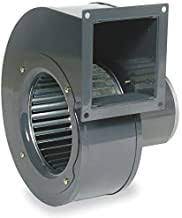
Variable-speed motor blowers will reach higher speeds incrementally, and therefore lower the amount of noise when lower amounts of air is required. This gradual increase in speed would also decrease wear and tear of the rotating parts, as well as lowering the energy consumption of the unit; therefore, operation and maintenance costs would be lower for these kinds of blowers.
Condenser Coil or Compressor
One of the important HVAC system components is the compressor or condenser coil which is normally placed outside. The warm refrigerant gas is taken to the compressor to dissipate heat to the outside environment and turn it into its liquid form. This liquid refrigerant is then taken to the evaporator coil through copper or aluminum tubes. A fan will increase the amount of air-flown passed the coils and boost the condensation process.
Evaporator Coil
The evaporator coil is one of the HVAC system components located indoors that receives the condensed refrigerant liquid from the compressor. The liquid refrigerant is atomized by spraying nozzles that increase the rate of refrigerant evaporation when it comes to contact with the room’s warm air.
There are fans that make the room’s warm air flow through the return ducts onto the evaporator. The warm air rejects heat to the atomized refrigerant and cool down, after which it is redistributed back to the rooms via the ducting. As the air passes over the cold evaporator coil, its moisture level would be lowered due to condensation of the moist air on the coil. The decrease in humidity makes the air feel even cooler, adding to the cooling process efficiency. The warm gas would then be re-transferred to the condenser coil to repeat the cycle.
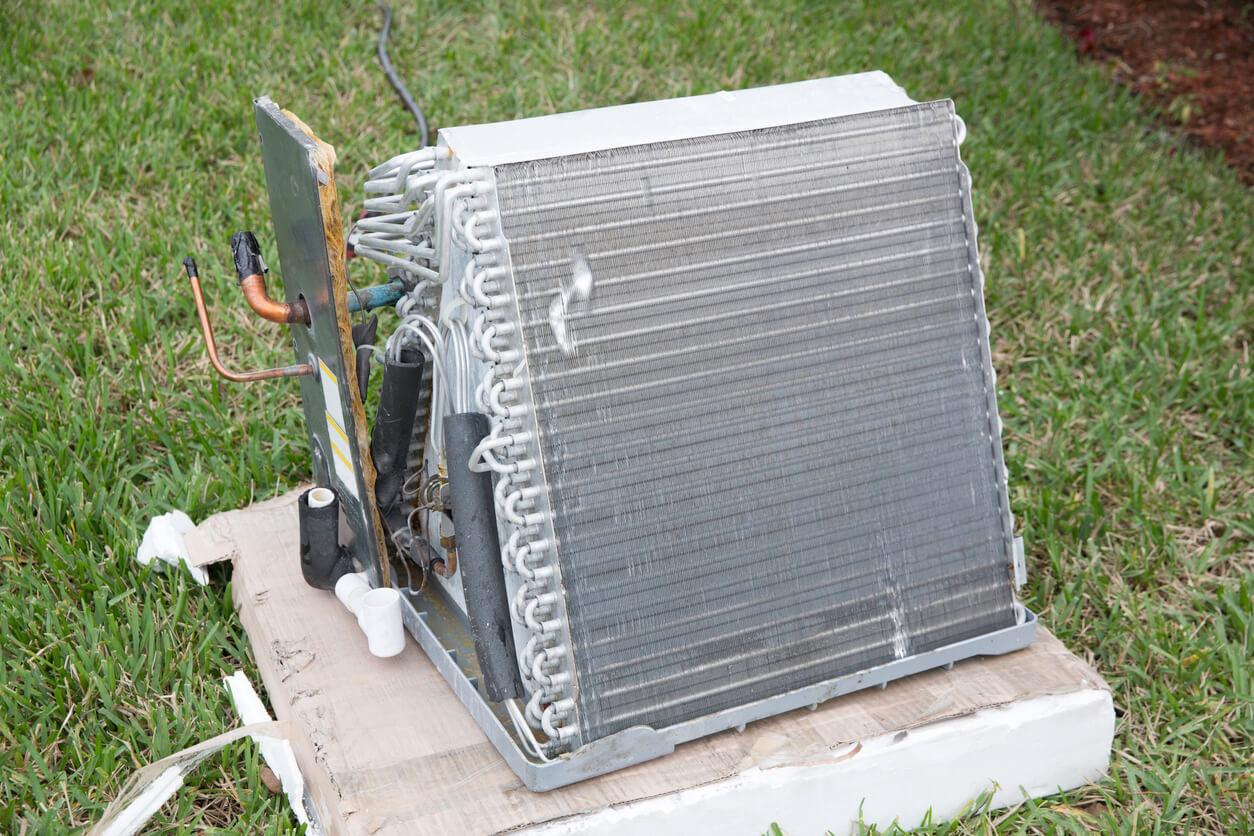
Air Ducts and Vents
The air is transferred via ducts to reach different HVAC system components. Good ducting is essential to have high-quality air delivered to the zone. Duct leakage could result in noise when the system is working. In addition, when the air ducting is not in good shape, odor, and excess moisture could fill the air.
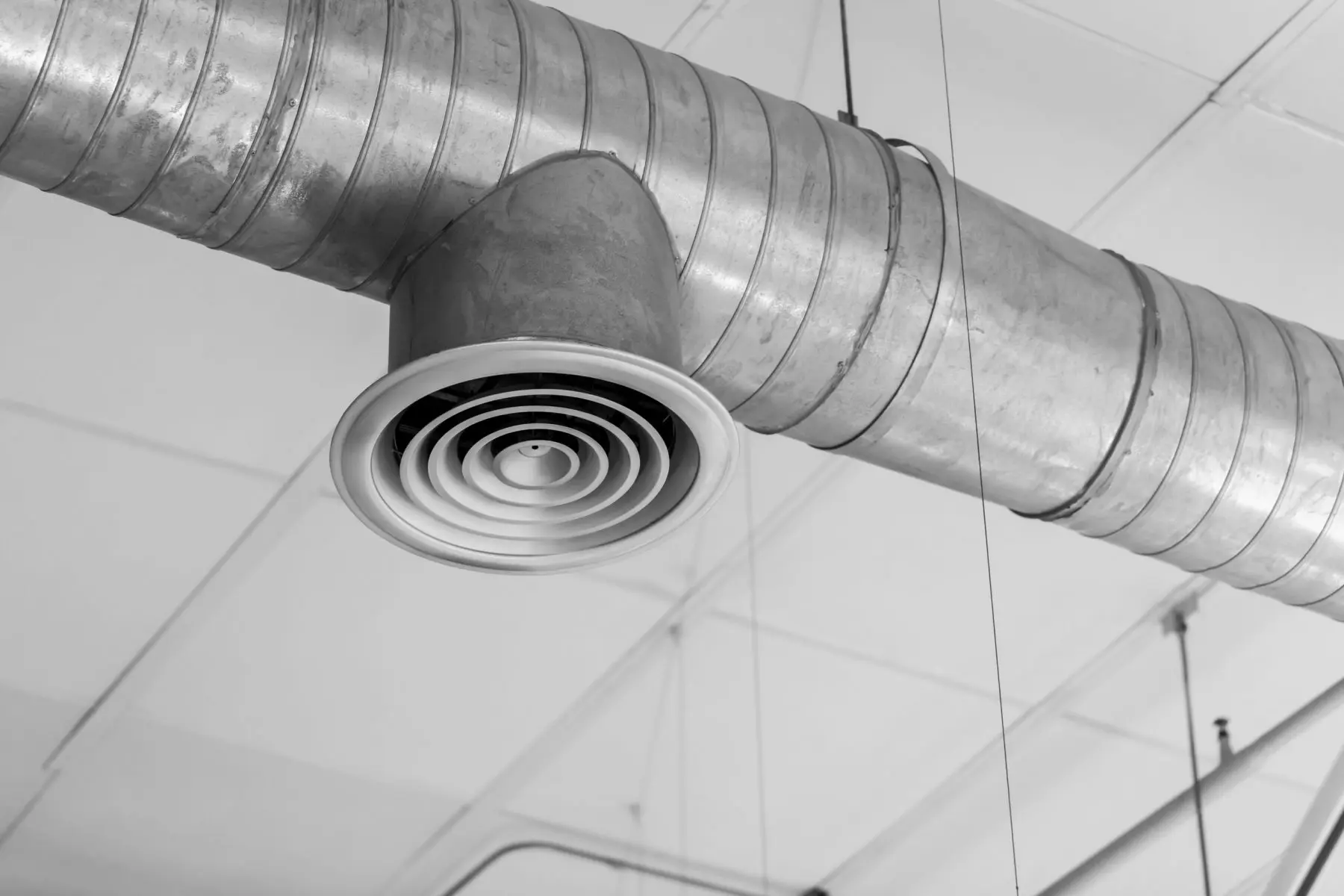
The air is delivered to the room by passing through the vents. The vents could be equipped with air filters to block dust and small particles from entering the room. Air filters could also be placed in other places inside the ducting.
Heat Pumps vs. Air Conditioners
What happens in heat pumps is the reverse process occurring in air-conditioning units, but with the same components as air-conditioners. Therefore, the heat from the outside would be transferred to the inside during cold weather conditions.
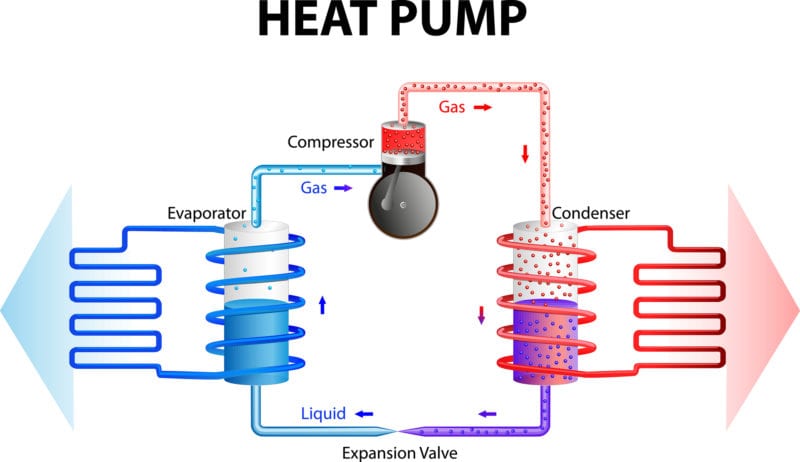
Split Units
Just to clarify the usage of these HVAC system components for one of the widely used types of air-conditioning/heat pump systems, i.e. the split units, the condenser/compressor is placed outside.
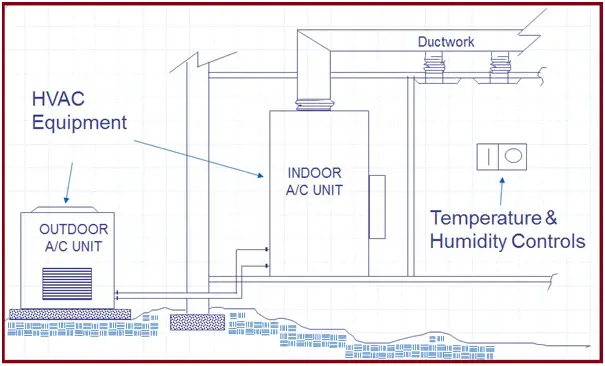
HVAC System Working Principle
Below is a general description of how HVAC systems work.
- In order for an HVAC system to function, the air return setup needs to be activated. An HVAC system’s air return system serves as a point of entry and exit for the ventilation cycle, which is continually active during its operation. Using industrial axial fans, outside air is drawn into the room, and inside air is forced outside using an exhaust fan.
- Dust and other bacterial matter are filtered out as part of the intake phase itself by the air filters.
- Additionally, an HVAC system can be used to perform one of the following two activities.
- Air Heating
In order to heat the air, the HVAC’s heating unit must be activated. The HVAC setup uses electronic heating elements to perform the heating operation. Electronic heaters, induction coils, thermostats, and so on., can be used as heating elements. During suction air flow, the heating element creates a heated zone in the path and as the air flows through it, it warms up. As a result, the room is injected with warm air.
2. Air Cooling
In order to cool the air, the cooling unit is activated. An air conditioning unit uses coils as part of a heat exchanger to cool the air. Cross-flow coils or shell-and-tube heat exchangers are two types of heat exchangers. Only cooled air is injected into the room through the exchanger unit, which uses a refrigerant to remove heat from the suction air. The refrigerant is liquefied by a compressor integrated into the cooling units.
- A blower fan unit is used to inject cooler or warmer air into the room.
Note that humidification or dehumidification of air is accomplished through heating or cooling itself; nevertheless, in regions with low humidity, spray humidifiers are usually incorporated into HVAC systems.
In order to see an interesting video about the working principle of different HVAC systems such as chillers, rooftop units (RTU), and air handling units (AHU) click here.
Video for More on HVAC System Components
You can learn some more details about HVAC system components in this video.
FAQs about HVAC System Components
- What are the different types of HVAC systems?
HVAC systems can be classified into four main types. HVAC systems come in split, hybrid, duct-free, and packaged forms. You can decide which type of HVAC unit is best for you by knowing each type’s pros and cons.
- Which HVAC components are most commonly prone to problems?
Here are the 10 most common HVAC problems you may encounter:
- Inadequate maintenance.
- Dirty filters.
- Ignition or pilot issues.
- Thermostat defects.
- Weakening of mechanical components.
- Weird furnace noises.
- Blown fuses or malfunctioning breakers.
- Evaporator or condenser coils that are dirty.
- Continual operation of the blower.
- Leaks of water.
Conclusion
We discussed the primary HVAC system components comprehensively in this post. For HVAC cooling and heating systems to perform effectively, high-quality components must be purchased from reputable suppliers. We have HVAC Systems Experts on staff who will help you select the right equipment for your unit. Furthermore, on Linquip, you can search for HVAC Service Providers if you need repair or maintenance for your HVAC system.
Download HVAC System Components PDF
Read More on Linquip
- HVAC Economizer 101: A Basic Introduction
- What is HVAC ? Types, Parts & Diagram
- Heat Pumps vs Air Conditioners: The Everlasting Battle
- A Brief and Easy Introduction to HVAC Maintenance
- What is the Difference Between MEP and HVAC? The Easy Answer
- HVDC vs HVAC Transmission Systems- Difference between them
- The Best HVAC Vacuum Pump (Clear Guide)
- Top 10 Manufacturers of HVAC Equipment in USA & World
- Easy Introduction to HVAC Maintenance and Services ( Heating and Cooling Repair )
- HVAC Economizer 101: A Basic Introduction

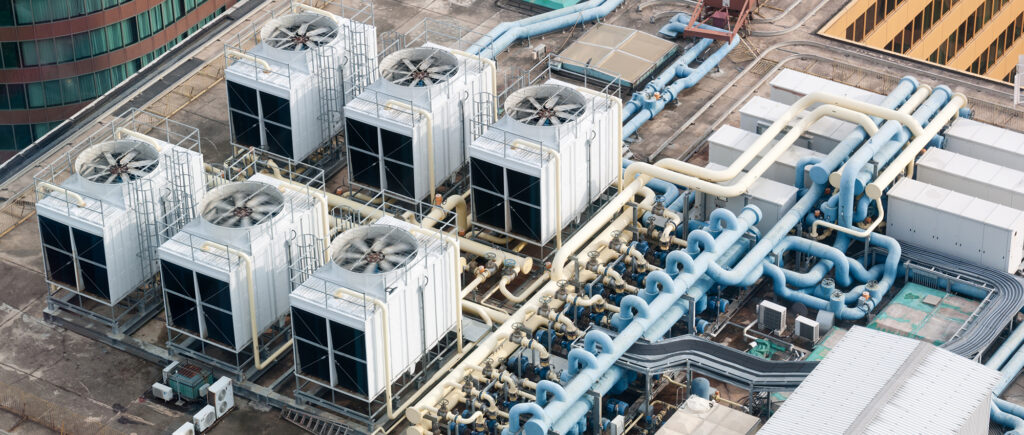


Your post is very informative. Thank you for sharing knowledge about the HVAC system.